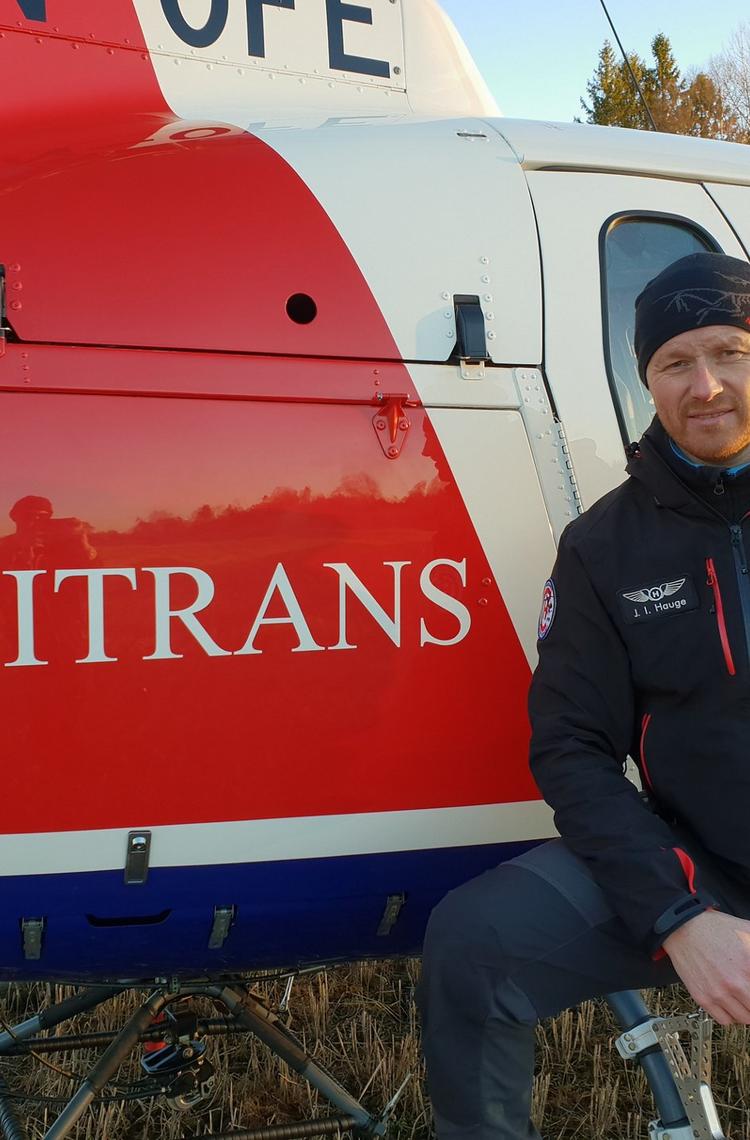Article: Belén Morant. Photos: Helitrans.
Adapted from Rotor magazine #114.
An estimated 80,000 reindeer live in Norway. In summer they move towards the coast and in winter migrate to the mountains. The Helitrans H125s are used to herd them.
In Norway, especially in the north, many farmers are involved in rounding up grazing reindeer: animals that live freely in the wild in the endless Scandinavian forests. In autumn, Sami farmers gather reindeer herds together to brand their ears. Their meat is one of the healthiest options on the market, mainly due to their 100% natural diet and unspoiled habitat. “Sami farmers prefer to use helicopters to herd the reindeer, specifically to avoid damage to forests,” explains Jens Ivar, head of operations at Helitrans in northern Norway. “Moreover, many places are just inaccessible by road.”
We have found ourselves face to face with 10,000 reindeer.
- Jens Ivar, Head of operations at Helitrans in northern Norway.
ONLY FOR EXPERTS
It is a tricky task only reserved for pilots with more than 800 flight hours. The first step consists in spotting the reindeer, by flying at about 300 metres up, and then driving them to the farm, always flying close to the ground at a very low speed.
“The biggest problems we encounter are the fog near the coast in summer, the wind in winter when flying low, and of course, the whiteout effect caused by the snow, which makes you lose visual references. The advantage of flying with the H125 at low altitude is undoubtedly its power. At this altitude, the helicopter runs the risk of being perturbed by its own vortex (called settling with power), but the power of the H125 means this is not a problem,” explains Jens Ivar.
The H125’s power is even more relevant in the cold of the polar circle. “We love flying in wintertime. When it is very cold, the sky is completely clear and the helicopter’s power margin is greater. There’s nothing like flying an H125 at -25ºC! It’s the ‘Ferrari’ of helicopters, that’s why we have 19 of them,” says Jens Ivar with a smile.
FLYING UNDER THE MIDNIGHT SUN
Another feature of operations in northern Norway, besides the particular climate, is the light. In summer, the sun shines 24 hours a day, a precious period during which the operator flies all the time, seven days a week. In winter, however, there are only three or four hours of light each day. “When you live in the north, this is normal to you,” says Jens Ivar. “That is why our pilots come from the region; they are used to flying in these conditions safely.”
Watch the clip: reindeer herding with Helitrans
In the field: firefighting
-
Where: from the North Cape to the South of Norway
-
When: summer
-
Mission: Helitrans runs firefighting operations on behalf of the government. "To reserve more power, the H125 carries only the pilot, and the Bambi Bucket is loaded with approximately 1,000 litres instead of the usual 1,300." "Beyond the visibility problems due to smoke, we have discovered that the most difficult part of this mission is good communication to avoid air collisions," says Jens Ivar.
In the field: power and telecom lines
-
Where: all over Norway
-
When: summer
-
Mission: Helitrans takes part in construction and monitoring of the 420 kW power lines and telephone antennas. "We take part in the foundation construction and then transport the towers as external cargo. During the inspections, technicians analyse the heat leaks with thermal cameras to identify problems on the lines."
In the field: wildlife studies
-
Where: all over Norway
-
When: all year
-
Mission: On behalf of the government and other organisations, Helitrans operates flights to study moose migrations to the mountains, to study birds on the coast and also simple tourist flights to observe animals. "People do not realise that Norway is so mountainous and dense. The helicopter is the least aggressive and most economic way to reach hundreds of places. The tourists love it."
